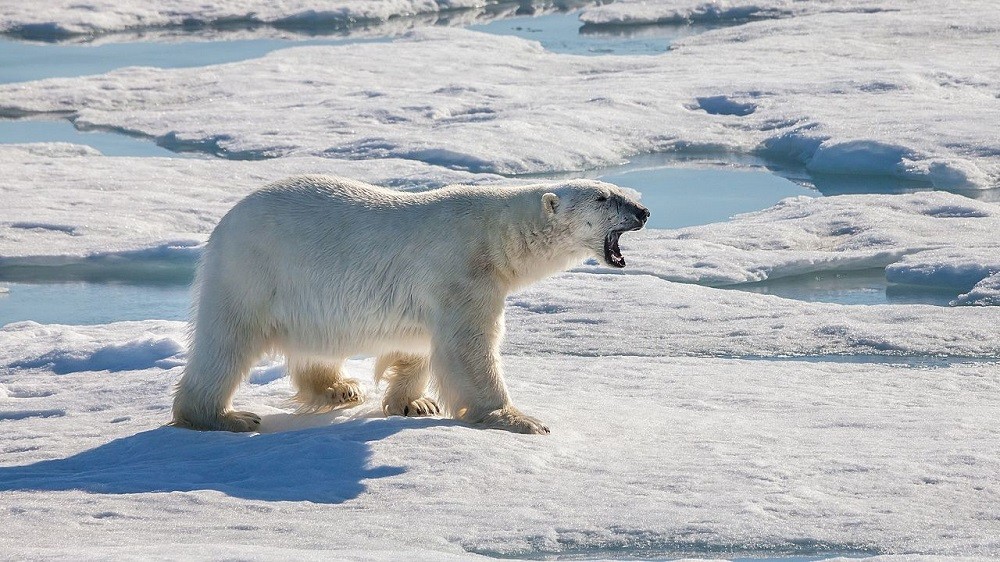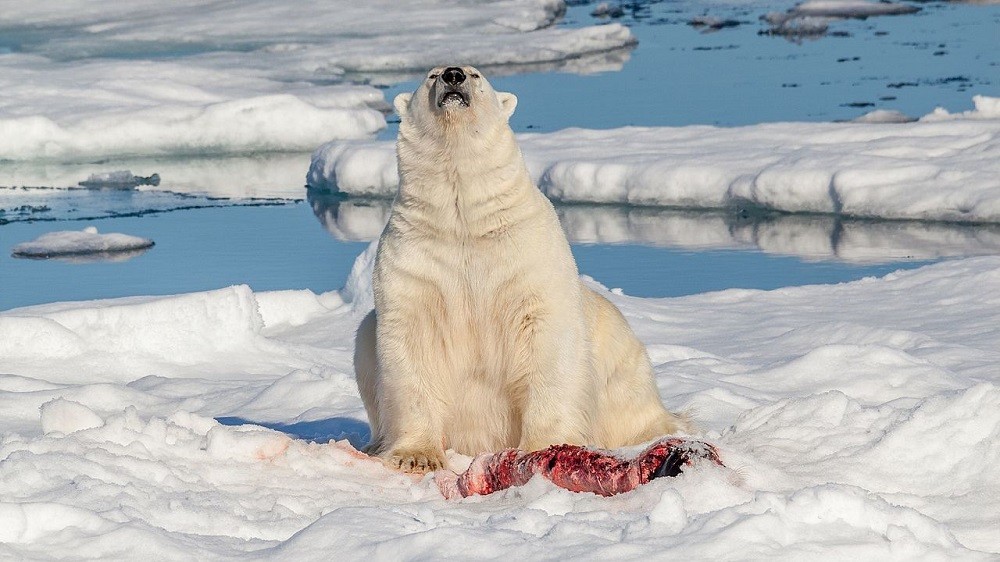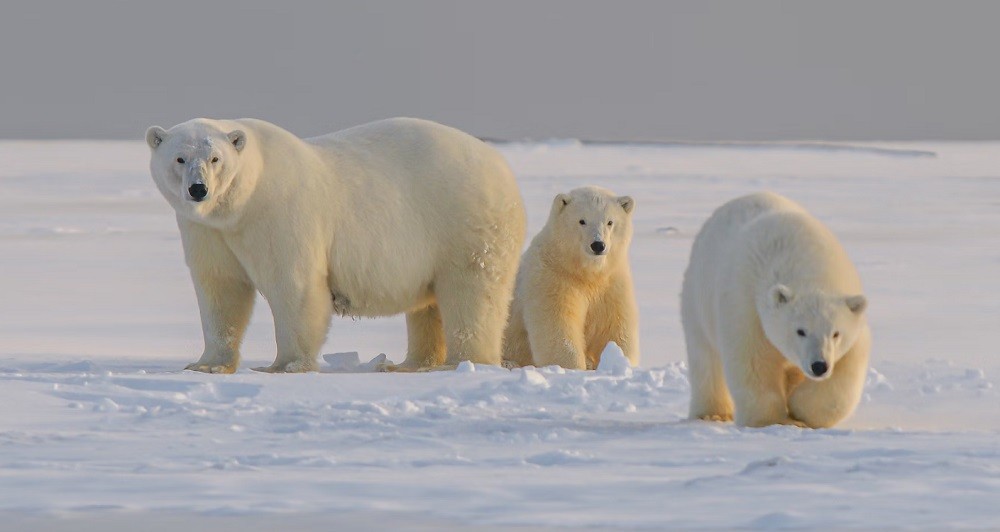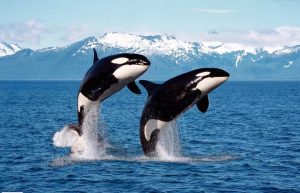
Photo: needpix.com/photo/download/733391/polar-bears-wildlife-snow-nature-wild-mammals-predators-ursus-maritimus-wilderness
What else is the name of the polar bear
In the west (Canada, Norway and other countries), the polar bear is called polar. In the languages of the northern peoples of Russia, he received many names: uryungage, oshkui , umka, Sir vark. His white coat is really only apparent. In order to mask the predator well in the snow, the polar bear’s fur became colorless. Each of them inside has a cavity filled with air, which retains heat.
Thick wool together with a thick layer of subcutaneous fat allows them to tolerate temperatures below -40 ° C. With age, the wool turns slightly yellow under the influence of sunlight. The polar bear is so well protected from the cold that it can overheat even at subzero temperatures. To avoid this, in their free time from hunting, animals try to move slowly and often rest. Polar bears are real giants.
The length of the body sometimes reaches three meters, and the height at the withers is 1.6 meters. Females weigh 100-300 kg, males 400-600 kg, but individuals weighing 800 kg are known. The inhabitants of the Arctic differ from other bears by their long neck and flat head. Impressive size does not make them sluggards — while running, they can reach speeds of up to 40, and swimming — up to 10 km/h. The exact number of polar bears is unknown, but scientists believe that it can reach up to 30 thousand individuals.
What do they eat?

Photo: commons.wikimedia.org/wiki/File:Polar_bear_%28Ursus_maritimus%29_assessing_its_environment_for_potential_natural_enemies.jpg
The polar bear became the only species of land mammals that was able to adapt to permanent habitation in the ice. The polar bear’s hearing, sight and sense of smell are so acute that they can smell seals, ringed seals and sea hares — their main prey — at a distance of up to tens of kilometers. The main diet: ringed seal, sea hare, walruses.
During hunting, a bear sneaks up from behind a shelter or lies in wait for marine mammals near holes: as soon as the animal appears out of the water, the predator stuns the prey with a paw and pulls it out onto the ice. Sometimes they attack Greenland seals and walruses — mostly weakened animals and cubs. But only 2% of the polar bear’s forays for food end in success. At the same time, he is able to starve and feel fit for several months.
At the same time, when on land, bears are able to switch relatively easily to carrion, algae, beached fish, and other animals that they are able to get. There are known cases of their feeding on seabird colonies. Many individuals are awake for a significant part of the winter and are forced to forage in extremely harsh conditions.
How cubs are born

Photo: upload.wikimedia.org/wikipedia/commons/thumb/6/6e/Polar_bear_after_unlucky_hunt_for_a_seal.jpg/1280px-Polar_bear_after_unlucky_hunt_for_a_seal.jpg
The exact number of polar bears is unknown, but scientists believe that it can reach up to 30 thousand individuals. Polar bears live in natural conditions for 25-30 years. Puberty occurs in 3-4 years. Pregnancy lasts 230-250 days, of which 50-80 days in hibernation.
The cubs do not leave the den for 3 months, they stay with their mother for up to 1.5 years. 20-30% of cubs do not live to adulthood. During the life of a female polar bear brings no more than 10-15 cubs.
In late autumn, pregnant females lie down in dens and in the middle of winter give birth to one to three cubs, usually two. On average, females bring offspring once every three years. The weight of a newborn bear cub is 700-800 g. Cubs eat only mother’s milk for 2-2.5 months and by the time they leave the den at the end of March they already weigh 8-10 kg and can follow the bear.
Polar bears are loners. With the exception of the mating season, they prefer to bypass their relatives by the side. During the summer melting of the ice, predators have to swim across large areas of the open sea, which is dangerous primarily for cubs. In nature, adult polar bears have almost no enemies, but cubs can be attacked by wolves, arctic foxes and wolverines.
Polar bears are vagrants and loners. Unlike their brown counterparts, they do not lie down in a den for the winter, as they are forced to hunt. Only pregnant females lie in dens dug in the snow. However, they are able to form a large temporary cluster near a food source (for example, a whale carcass washed ashore), where, as a rule, they are peaceful towards each other.
Where do these “tramps” live

Photo: unsplash.com/photos/polar-bear-on-snow-covered-ground-during-daytime-NL1vH0hnIbQ
In summer, they leave with the ice closer to the pole, in winter they move south, entering the mainland. They are excellent swimmers and are able to swim across large stretches of tens or even hundreds of kilometers between long-term sea and coastal ice.
Polar bears’ habitats are the drifting perennial and soldered coastal ice of the Arctic, sometimes the coast and islands. In addition to Russia, the predator can be found in Norway (Svalbard Islands), Canada, Greenland (Denmark) and Alaska (USA).
Scientists identify more than 20 local polar bear populations. In Russia, according to the Red Book, there are three of them: Barents-Kara (Barents and Kara Seas), Laptev (Laptev Sea) and Chukchi-Alaska (common to Russia and the USA).
Representatives of different populations differ slightly from each other. For example, Chukchi-Alaskan bears are larger than Barents Sea bears. The Laptev population is estimated at 800-1.2 thousand individuals, while the Chukchi-Alaskan and Barents Sea-Kara number 2-5 thousand animals each.
In total, there are about 30 thousand polar bears in the world. At the same time, by the middle of the century, a decrease in the number is expected due to the large summer melting of ice in the Arctic. The disappearance of the permanent ice cover means the loss of hunting and feeding grounds, since the bear is not adapted to get food in the meager tundra.
By RIA


